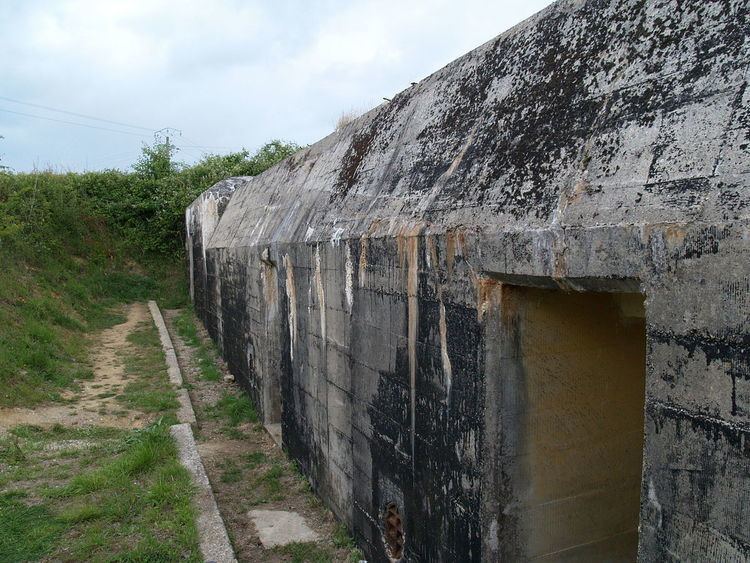In use 1942-44 Year built 1942 | ||
 | ||
Open tothe public All casemates are open to public Condition Several casemates, accommodation block, trench system Address Marais du Cotentin et du Bessin Natural Regional Park, Les Perruques, 14450 Grandcamp-Maisy, France Similar Centre d'informat Pointe Du, Overlord Museum, Musée du Débarqu Utah Bea, Musée Mémorial d'Omaha, Musée des Rangers | ||
The Maisy battery is a group of World War II artillery batteries constructed by the Wehrmacht near the French village of Grandcamp-Maisy in Normandy. It formed a part of Germany's Atlantic Wall coastal fortifications and was the principal position of defence for that area. It was responsible for the defense of the sector between the Longues-sur-Mer and the St Marcouf (Crisbecq) batteries. It could target both Omaha Beach and Utah Beach.
Contents
The complex was built under strict security by forced labour from Russia, Czechoslovakia and Poland and the Wehrmacht run battery was not marked on the Allied D-Day maps which were released to the invasion troops. Given that the Allied Rangers were not briefed to assault Maisy Battery and were instead sent to attack the empty gun battery at Pointe du Hoc, author and historian Gary Sterne was the first to publicy suggest that Pointe du Hoc (leading up to D-Day) was used by German defenders as a ruse to lead the Allies away from the Maisy site.
Maisy battery normandy 2007
Normandy landings
The site actually consisted of three batteries, Les Perruques, La Martiniere and Foucher Farm, allied targets 5, 16 and 16A respectively. The battery at Les Perrugues, which was designated by the Germans as WN83, Widerstandsnest 83 (Resistance Nest 83), included six 155-mm First World War French field howitzers. The battery at La Martiniere, designated WN84, included four 105-mm pieces. Four 150-mm pieces were located at Foucher Farm.
The battery is located 1.5 mi (2.4 km) from Pointe du Hoc, a key objective for the US Rangers during D-Day. The battery was garrisoned by elements of the 352nd and 716th Infantry and Artillery Divisions, plus Flak Regiment No. 1 consisting of twelve 88-mm anti-aircraft artillery pieces sent to protect the battery shortly before D-Day on 5 June 1944.
Fouchers' Farm was destroyed by naval shelling from the USS Shubrick (DD-639) on the 7 June 1944. The other two sites remained operational until they were assaulted by the US 2nd Rangers and the US 5th Rangers on 9 June.
The batteries at Maisy were D-Day mission objective Number 6 as given to Colonel James Rudder in his Operation Neptune intelligence and 1st Infantry Division orders. However, he did not brief his men to carry out the mission to Maisy.
Rediscovery
British military historian Gary Sterne rediscovered Maisy Battery in January 2004 based on a map which accompanied a US Army veteran's uniform he had bought. The battery was about a mile from the sea near Grandcamp-Maisy, marked on the map as an "area of high resistance". However, the location was not one at that time recorded amongst other D-Day fortifications. Sterne was able to locate a bunker entrance amongst the undergrowth. Sterne then investigated further to find additional fortified buildings, gun platforms, and a hospital. Over two miles of trenches were uncovered at Les Perruques.
In April 2007 the site was opened for the first time to visitors.
